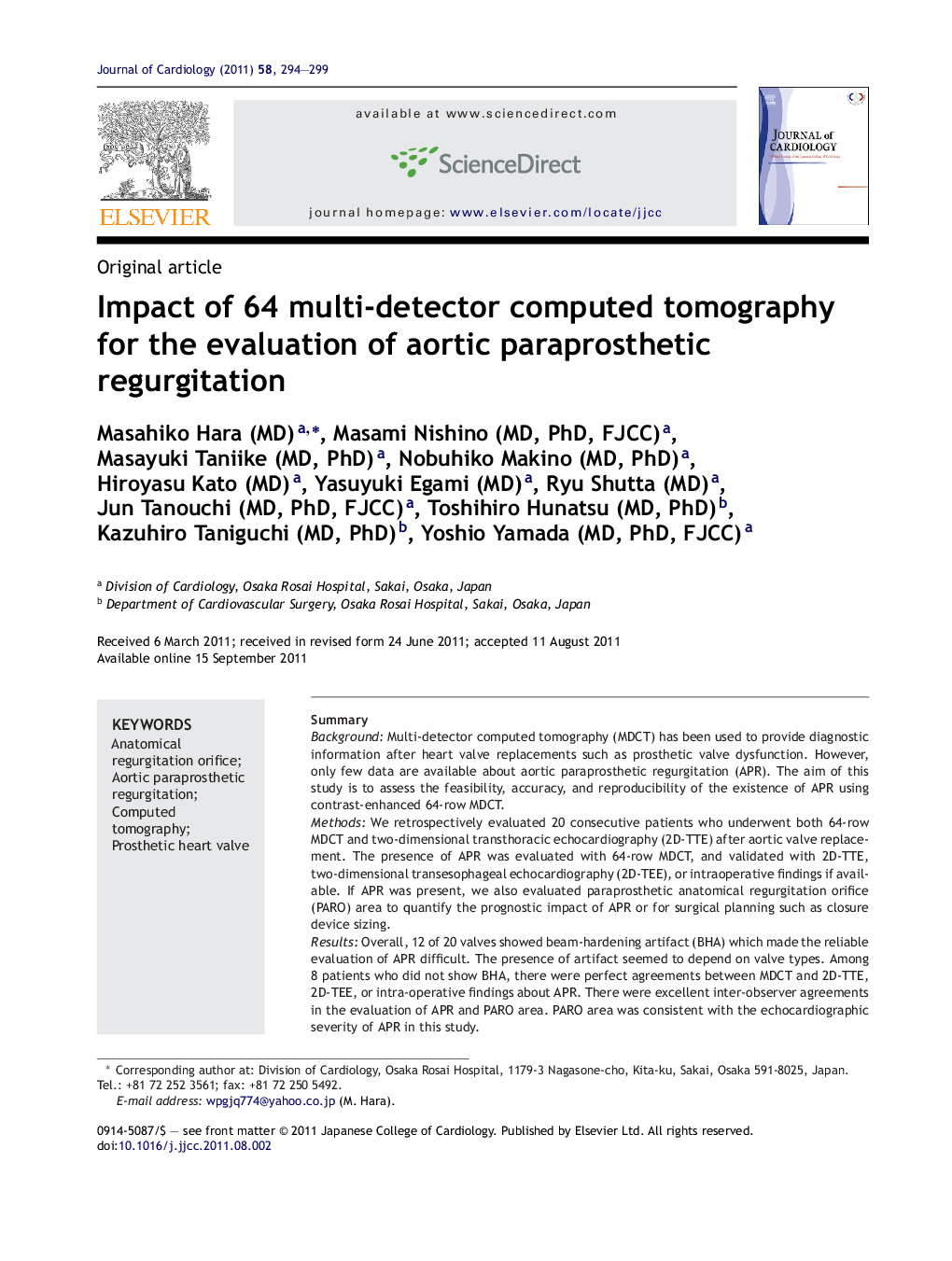| Article ID | Journal | Published Year | Pages | File Type |
|---|---|---|---|---|
| 2963342 | Journal of Cardiology | 2011 | 6 Pages |
SummaryBackgroundMulti-detector computed tomography (MDCT) has been used to provide diagnostic information after heart valve replacements such as prosthetic valve dysfunction. However, only few data are available about aortic paraprosthetic regurgitation (APR). The aim of this study is to assess the feasibility, accuracy, and reproducibility of the existence of APR using contrast-enhanced 64-row MDCT.MethodsWe retrospectively evaluated 20 consecutive patients who underwent both 64-row MDCT and two-dimensional transthoracic echocardiography (2D-TTE) after aortic valve replacement. The presence of APR was evaluated with 64-row MDCT, and validated with 2D-TTE, two-dimensional transesophageal echocardiography (2D-TEE), or intraoperative findings if available. If APR was present, we also evaluated paraprosthetic anatomical regurgitation orifice (PARO) area to quantify the prognostic impact of APR or for surgical planning such as closure device sizing.ResultsOverall, 12 of 20 valves showed beam-hardening artifact (BHA) which made the reliable evaluation of APR difficult. The presence of artifact seemed to depend on valve types. Among 8 patients who did not show BHA, there were perfect agreements between MDCT and 2D-TTE, 2D-TEE, or intra-operative findings about APR. There were excellent inter-observer agreements in the evaluation of APR and PARO area. PARO area was consistent with the echocardiographic severity of APR in this study.ConclusionsOur retrospective data suggest that MDCT could be a reliable technique for the evaluation of APR after On-X standard or SJM standard valve replacement. MDCT can become a novel quantitative tool for the evaluation of PARO area.
